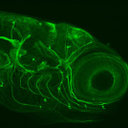Predictors of occult paroxysmal atrial fibrillation in cryptogenic strokes detected by long-term noninvasive cardiac monitoring.
מילות מפתח
תַקצִיר
Background and Purpose. Paroxysmal Atrial fibrillation/Flutter (PAF) detection rates in cryptogenic strokes have been variable. We sought to determine the percentage of patients with cryptogenic stroke who had PAF on prolonged non-invasive cardiac monitoring. Methods and Results. Sixty-two consecutive patients with stroke and TIA in a single center with a mean age of 61 (+/- 14) years were analyzed. PAF was detected in 15 (24%) patients. Only one patient reported symptoms of shortness of breath during the episode of PAF while on monitoring, and 71 (97%) of these 73 episodes were asymptomatic. A regression analysis revealed that the presence of PVCs (ventricular premature beats) lasting more than 2 minutes (OR 6.3, 95% CI, 1.11-18.92; P = .042) and strokes (high signal on Diffusion Weighted Imaging) (OR 4.3, 95% CI, 5-36.3; P = .041) predicted PAF. Patients with multiple DWI signals were more likely than solitary signals to have PAF (OR 11.1, 95% CI, 2.5-48.5, P < .01). Conclusion. Occult PAF is common in cryptogenic strokes, and is often asymptomatic. Our data suggests that up to one in five patients with suspected cryptogenic strokes and TIAs have PAF, especially if they have PVCs and multiple high DWI signals on MRI.


